Most people might choose to stay home in the midst of a snow storm, but most people are not me! When a weather window appeared this morning with lighter snow and wind, before a second storm onslaught I went looking for a “Snowy in a Snow Storm”! Now normally looking for a Snowy Owl around 10:30 am would be an exercise in frustration, but I thought last nights ugly weather followed by this brief respite might bring an owl or two out into the open. I was not disappointed.
This Snowy had been actively looking around, and then started to snooze. However, when owl and I heard crows approaching the Snowy quickly woke up and exited Stage Left!
Snowy Owl in a Snow Storm (White on White in White!)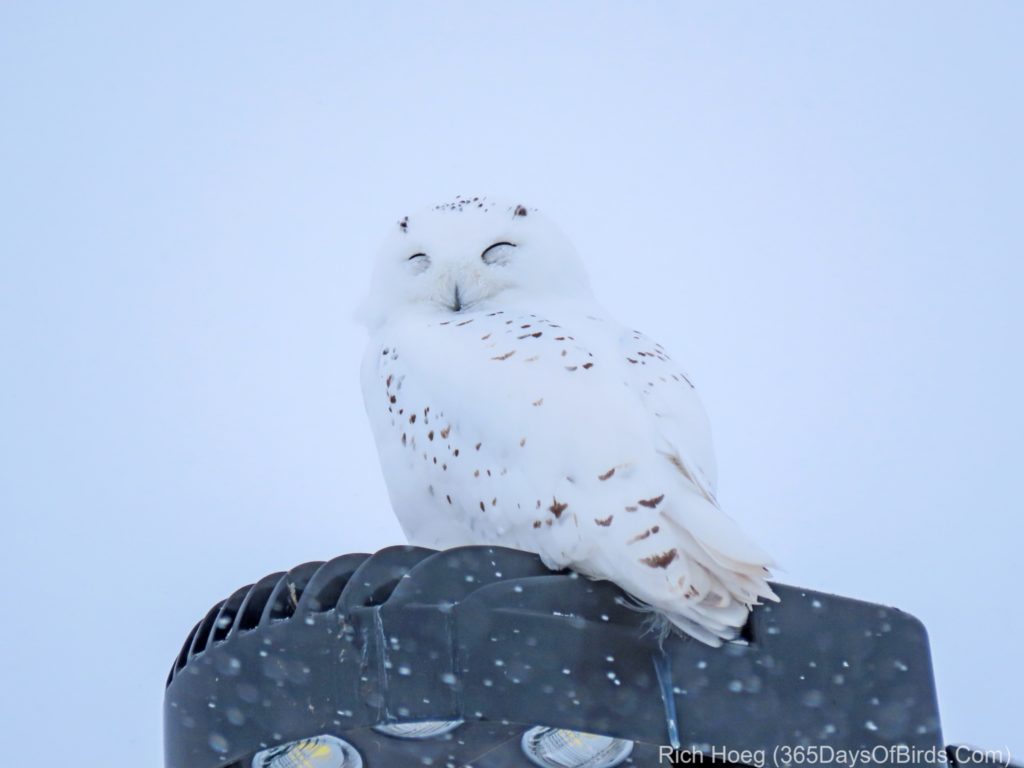
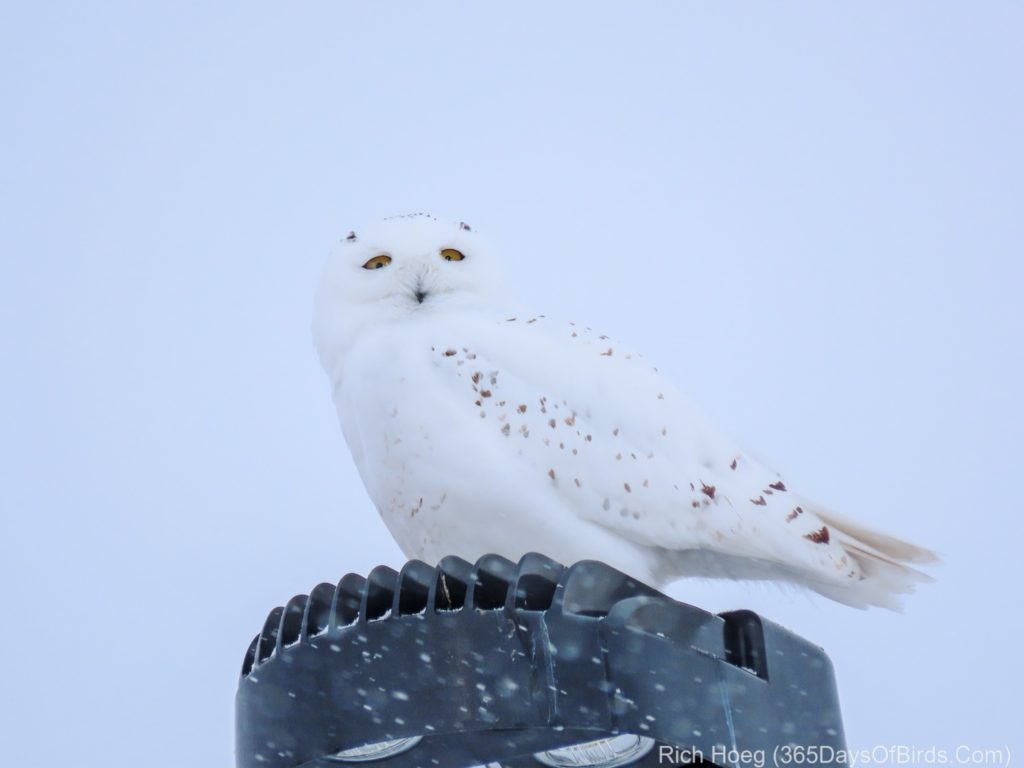
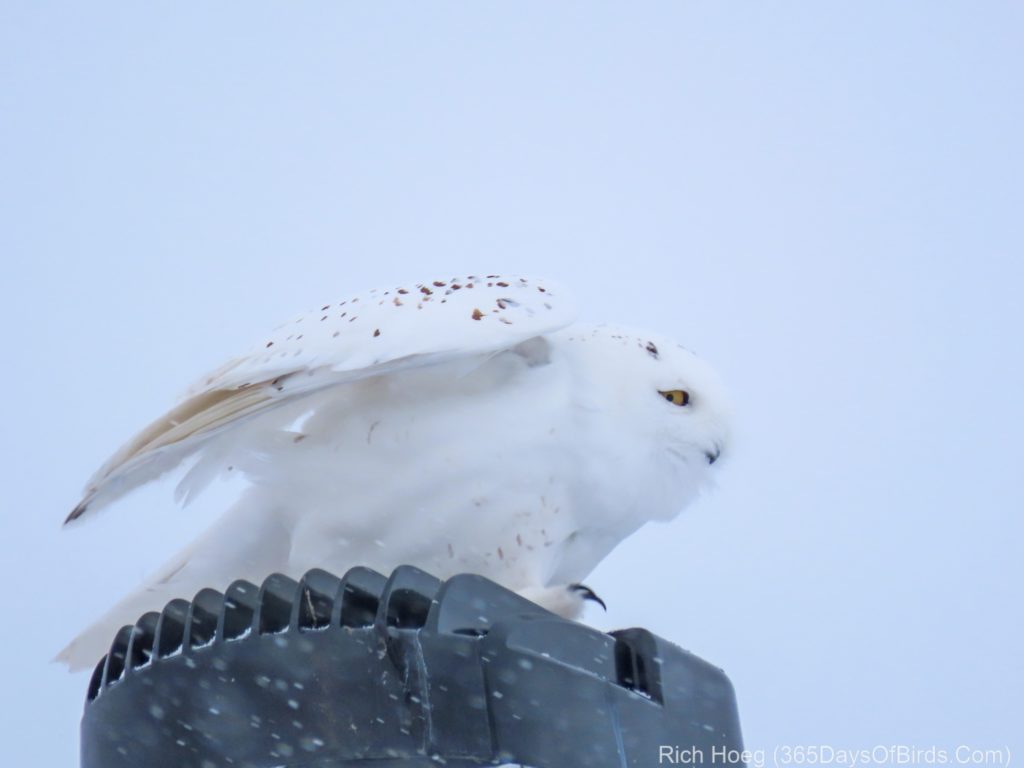
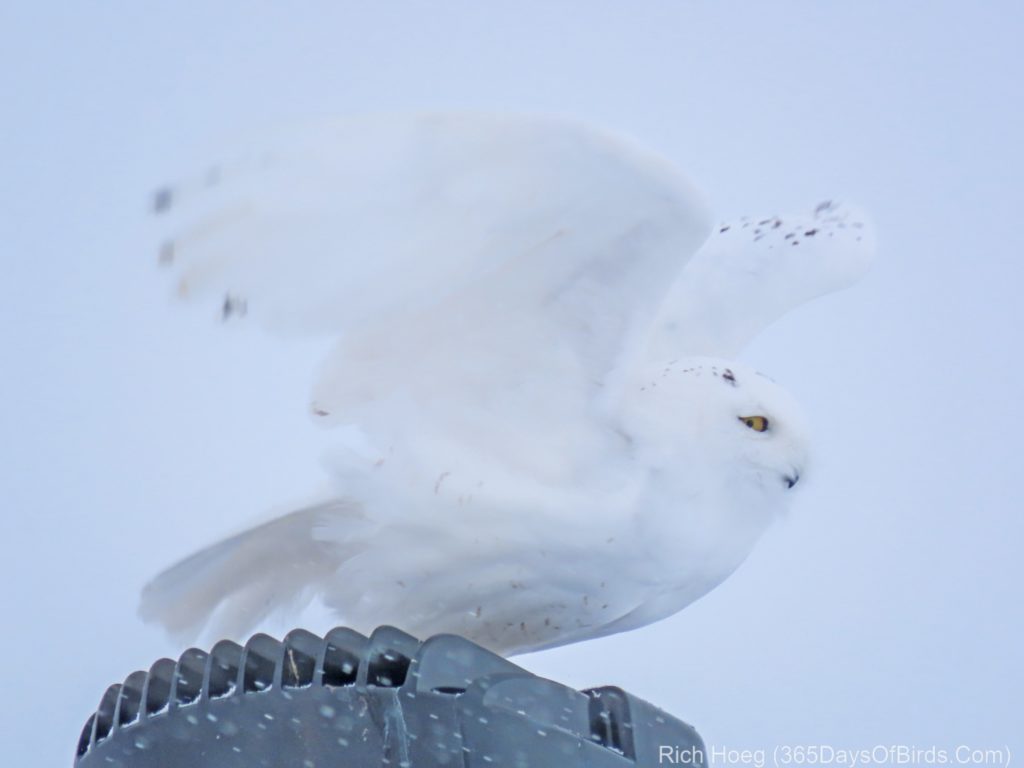
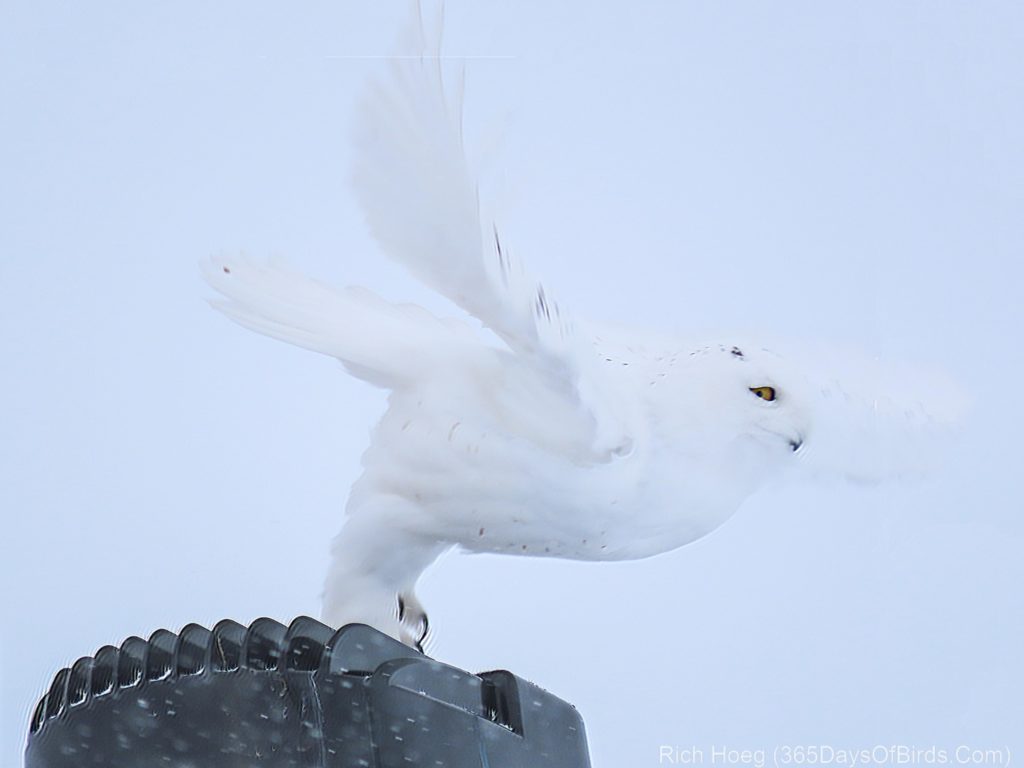
The photographic conditions were hugely sub-optimal. I was very pleased with my results. There is not a ton of contrast available when one is attempting to photograph a white bird in a white storm against a white background. Try it some time. Given this owl is a “very white male”, my task was even more difficult.
Discover more from 365 Days of Birds
Subscribe to get the latest posts sent to your email.
Thank you for detailing your pics (the camera you are using etc). I’ve recently purchased an sx70 – your pics and positive comments helped me to read the varying comments about the camera with a more open mind. I hope I can get the same standard of pics as you do. I appreciate your positivity.
Jackie: Some of the key elements which help me take the pictures I do withnthe Sx70 are:
1. Making a decision before I approach a bird as to what kind of photograph I desire (in motion or stationary)
2. If stationary, and light conditions all, I set ISO to 100 and then use burst mode. Even a stationary bird is almost always moving some with brief periods of immobility. I use burst mode like crazy and commonly come home with 400+ images of which I throw out almost everything. In this instance I tend to use aperture priority to insure proper lighting. The camera sets the shutter speee
3.If going for a motion image, I want an exposure of 1/1000 of a second, or 1/1250th for hummingbirds. I only try to take this kind of photo on sunny days. Obviously I use shutter priority in this instance.
I do not have the camera taking RAW images. I feel the algorithm for JPG is really darn good, and by not taking RAW images the burst mode takes many more photographs per second. A lot happens in one second. Having 12 rather than 8 images is a huge advantage.
Enough for now ..l enjoy your SX70. These pointers would work for most cameras. Oh yes, I use a monopod for both stabilization and it allows me to stay poised for much longer on the shutter. I watched the Snowy in a Snow Storm for a long time. Hand holding a camera for a long time while waiting for action is both difficult and tiring.
Richard – thank you so much for taking the time to reply and especially for your helpful advice. I had my first day outdoors with the camera today but have to admit I stuck to Auto to just get a feel for it. I’ve discovered that I definitely need to use a monopod! I’ve been happy with the ‘playing’ I’ve done so far. Thanks again for your encouragement and advice.
Enjoy your photos! Are you still using your superzoom point and shoot Canon?
The camera I use most of the time for bird photographs is my Canon Sx70, but it is a bridge camera … not a point and shoot. For todays images I was on full manual mode … setting my aperture, exposure and ISO. I am not trying to belittle the point, but a “point and shoot” implies the photographer is leaving all choices to the camera. For my recent SeaSmoke images, I used my Sony A6300.